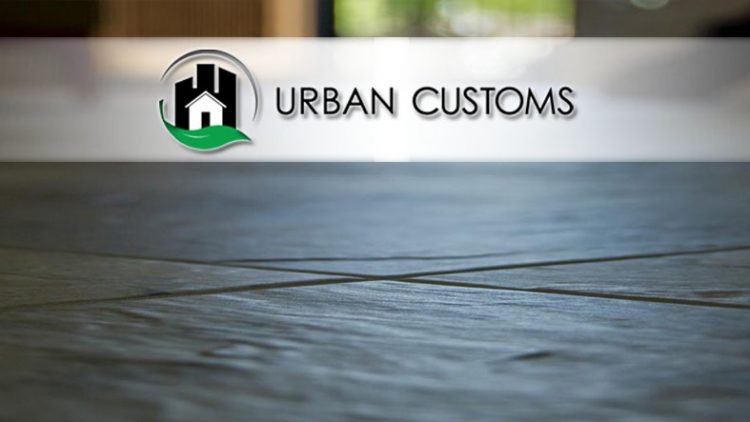Popular Stone Flooring Options
Stone flooring is a popular and timeless option that can add beauty, elegance, and durability to any space. There are various types of natural stone flooring, each offering unique textures, colors, and benefits. Here’s an overview of the most popular stone flooring options:
1. Marble Flooring
- Appearance: Marble is known for its luxurious and classic look, with unique veining and a high-gloss finish. It comes in a variety of colors, including white, beige, gray, and even vibrant hues.
- Advantages:
- Elegant and sophisticated appearance.
- Adds value to homes.
- Long-lasting when properly maintained.
- Disadvantages:
- Prone to scratching and staining, especially from acidic substances (like lemon juice or wine).
- Requires regular sealing to prevent damage.
- Best for: Bathrooms, entryways, living rooms, and areas where a high-end look is desired.
2. Granite Flooring
- Appearance: Granite is a dense and highly durable stone that comes in a variety of colors and patterns, including speckled, swirled, and veined designs. It has a shiny, polished finish.
- Advantages:
- Extremely durable and resistant to scratches, heat, and stains.
- Low maintenance compared to softer stones like marble.
- Available in a wide range of colors.
- Disadvantages:
- Can be expensive, especially for higher-end varieties.
- Requires sealing to prevent staining.
- Best for: Kitchens, hallways, and high-traffic areas.
3. Travertine Flooring
- Appearance: Travertine has a distinctive porous texture and comes in neutral tones like beige, cream, and brown. It often has a rustic, earthy look and can be found in polished or honed finishes.
- Advantages:
- Adds a warm, rustic appeal to spaces.
- Can be used both indoors and outdoors.
- Available in various finishes like honed, polished, or tumbled.
- Disadvantages:
- Porous nature can lead to staining if not sealed properly.
- Requires regular maintenance to keep it looking good.
- Best for: Living rooms, entryways, bathrooms, patios, and pool areas.
4. Slate Flooring
- Appearance: Slate has a natural, earthy appearance, with colors ranging from shades of gray, green, purple, to black. It often has a textured surface, which adds depth to the floor.
- Advantages:
- Very durable and resistant to water, stains, and scratches.
- Adds a rustic, natural look to any space.
- Available in a range of finishes, from matte to glossy.
- Disadvantages:
- Can be uneven, which may require leveling during installation.
- Surface can be rough, which might not be suitable for all interior styles.
- Best for: Kitchens, bathrooms, patios, and entryways.
5. Limestone Flooring
- Appearance: Limestone comes in shades of beige, brown, yellow, and gray. It has a soft, elegant appearance with a slightly textured surface, offering a more subtle look compared to marble or granite.
- Advantages:
- Provides a smooth and attractive surface.
- Adds a soft, natural warmth to a space.
- Great for creating a Mediterranean or rustic ambiance.
- Disadvantages:
- Softer than granite or slate, making it prone to scratching and damage over time.
- Prone to staining and requires sealing to protect it.
- Best for: Living rooms, bathrooms, kitchens, and outdoor areas.
6. Quartzite Flooring
- Appearance: Quartzite has a sophisticated, polished appearance similar to marble, but it’s much more durable. It comes in a variety of colors, including white, gray, and earthy tones.
- Advantages:
- Extremely durable and resistant to scratches and heat.
- Offers a similar look to marble but with more resilience.
- Low maintenance when sealed properly.
- Disadvantages:
- Can be quite expensive.
- Like marble, it requires sealing to prevent staining.
- Best for: Kitchens, bathrooms, and high-traffic areas where durability is key.
7. Soapstone Flooring
- Appearance: Soapstone has a smooth, soft feel with subtle variations in color, often gray, green, or blue. It develops a natural patina over time, adding character to the flooring.
- Advantages:
- Highly resistant to heat and stains.
- Non-porous, meaning it does not require sealing.
- Soft texture that feels smooth underfoot.
- Disadvantages:
- Softer than other stones, meaning it may scratch more easily.
- Limited color choices compared to other stones.
- Best for: Kitchens, fireplaces, and areas with moderate foot traffic.
8. Flagstone Flooring
- Appearance: Flagstone consists of flat stones of various colors (gray, red, brown, or tan) with a rough, irregular texture. It is often used for both indoor and outdoor flooring.
- Advantages:
- Gives a rustic, natural appearance.
- Suitable for both indoor and outdoor use.
- Very durable and slip-resistant, making it ideal for outdoor patios or walkways.
- Disadvantages:
- Can be uneven or challenging to install.
- Gaps between stones can collect dirt and debris.
- Best for: Patios, walkways, outdoor areas, and rustic-style interiors.
9. Onyx Flooring
- Appearance: Onyx is a luxurious stone with striking color patterns, ranging from greens, browns, oranges, and reds to translucent hues. Its unique, vibrant appearance makes it stand out.
- Advantages:
- Stunning and eye-catching with beautiful color patterns.
- Often used for accent pieces, inlays, or backsplashes.
- Disadvantages:
- Very soft and prone to scratching or damage.
- Expensive and requires regular sealing and maintenance.
- Best for: Decorative applications, accent areas, or as a statement piece.
10. Terrazzo Flooring
- Appearance: While not a natural stone itself, terrazzo is made from a blend of stone chips (marble, quartz, granite, or glass) embedded in a cement or resin base. It comes in a wide range of colors and patterns.
- Advantages:
- Durable, long-lasting, and easy to clean.
- Can be customized with different types of stone chips for a unique look.
- Disadvantages:
- The installation process can be time-consuming and expensive.
- Harder underfoot compared to other flooring options.
- Best for: Commercial spaces, modern homes, and areas where customization is key.
Conclusion:
Choosing the right stone flooring depends on factors like your desired aesthetic, budget, and the level of maintenance you’re willing to commit to. Marble and granite offer luxury and durability, while slate and flagstone provide a more rustic, earthy feel. Travertine and limestone are excellent for Mediterranean or rustic styles, while quartzite offers a resilient alternative to marble. Ultimately, your choice should reflect both your design preferences and practical needs for maintenance, durability, and cost.
Considering Stone Flooring Installation In Phoenix, Arizona?
Urban Customs is Phoenix, Arizona’s premier natural stone flooring installer with the experience and knowledge necessary to make your flooring installation a breeze. Check out our flooring installation services.
Contact us today to speak to one of our flooring experts and find which natural stone tile will work best for your project.[/vc_column_text][/vc_column][/vc_row]


